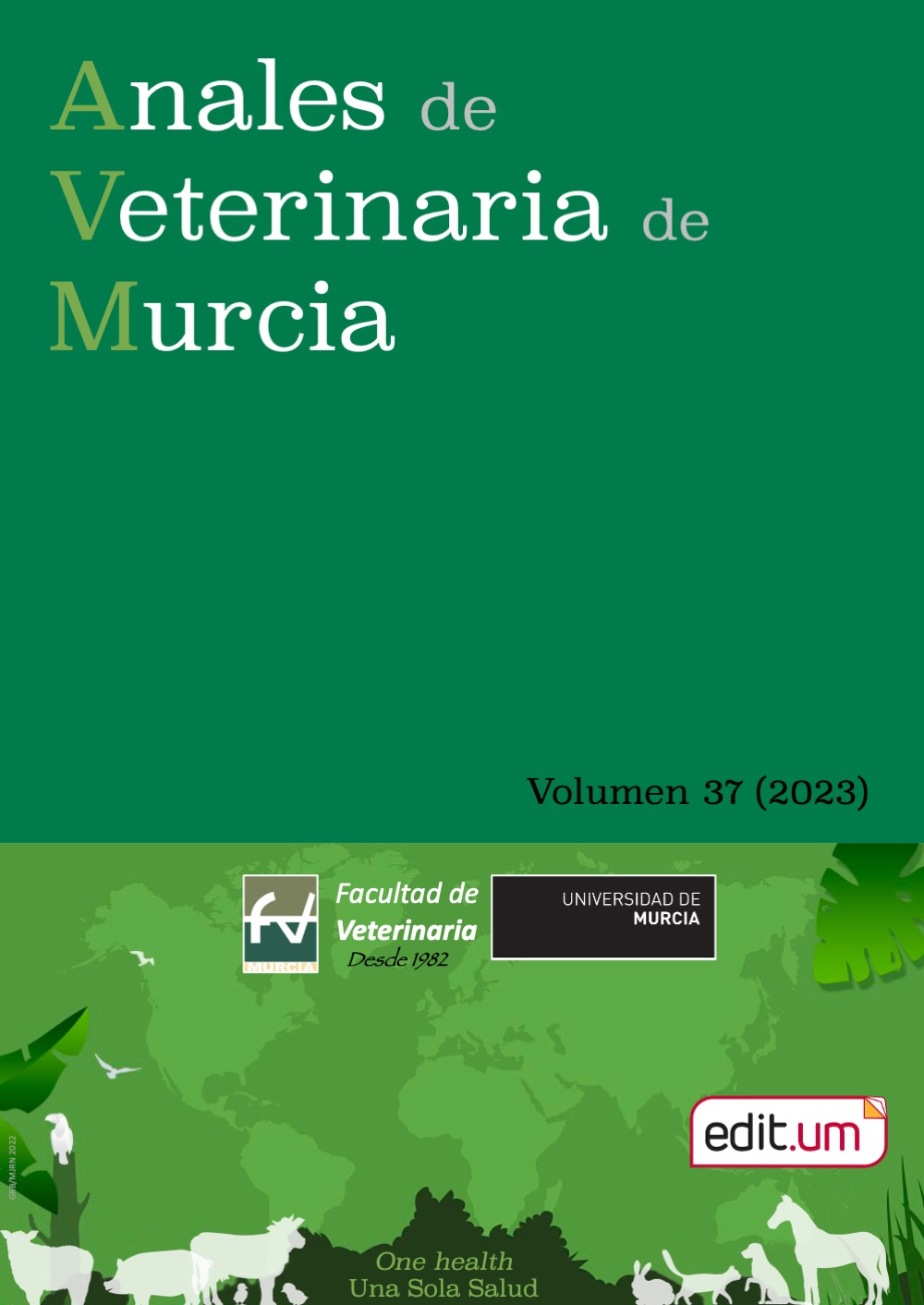USE OF ALPERUJO AS AN INGREDIENT IN THE FORMULATION OF BREAD
Abstract
Spain is currently the world's leading producer of olive oil, and the large amount of liquid and solid waste produced by this industry in our country constitutes a significant environmental problem. One of the main solid residues from the olive oil industry is olive pomace (AP) In this work, this by-product has been used as an ingredient in the formulation of breads at different concentrations: control bread (without olive pomace), AP5 (5%), AP10 (10%) and AP15 (15%). Measurements of colorimetry, firmness, weight loss due to cooking, determination of total phenols, weight and height loss over time and a sensory analysis carried out by an untrained tasting panel have been carried out on these breads. The results obtained have been a minor increase in the firmness of the bread over time, an important contribution of total phenols, a decrease in the loss of height and weight of the bread and a product acceptability of 50%.
Downloads
References
Aceite de oliva. Mapa.gob.es. (2022)., https://www.mapa.gob.es/es/agricultura/temas/producciones-agricolas/aceite-oliva-y-aceituna-mesa/aceite.aspx . Acceso 13 junio 2022
Alburquerque, J. (2004). Agrochemical characterisation of “alperujo”, a solid by-product of the two-phase centrifugation method for olive oil extraction. Bioresource Technology, 91(2), 195-200. https://doi.org/10.1016/s0960-8524(03)00177-9.
Annamaria Cedola, Angela Cardinali, Matteo Alessandro Del Nobile, & Amalia Conte. (2019). Enrichment of Bread with Olive Oil Industrial By-Product. Journal Of Agricultural Science And Technology B, 9(2). https://doi.org/10.17265/2161-6264/2019.02.005.
Cedola, A., Cardinali, A., D'Antuono, I., Conte, A., & Del Nobile, M. (2020). Cereal foods fortified with by-products from the olive oil industry. Food Bioscience, 33, 100490. https://doi.org/10.1016/j.fbio.2019.100490.
Caraballo Roldán, A., & Sousa Márquez, M. (2002). Manual de gestión ambiental. Consejería de Medio Ambiente.
Cecchi, L., Schuster, N., Flynn, D., Bechtel, R., Bellumori, M., & Innocenti, M. et al. (2019). Sensory Profiling and Consumer Acceptance of Pasta, Bread, and Granola Bar Fortified with Dried Olive Pomace (Pâté): A Byproduct from Virgin Olive Oil Production. Journal Of Food Science, 84(10), 2995-3008. https://doi.org/10.1111/1750-3841.14800.
Clean Label Mold Inhibitors for Baking - Oklahoma State University. (2022). Retrieved 1 June 2022, from https://extension.okstate.edu/fact-sheets/clean-label-mold-inhibitors-for-baking.html.
Covas, M., & Salonen, J. (2007). The Effect of Polyphenols in Olive Oil on Heart Disease Risk Factors. Annals Of Internal Medicine, 146(5), 394. https://doi.org/10.7326/0003-4819-146-5-200703060-00015.
de la Torre-Carbot, K., Chávez-Servín, J., Jaúregui, O., Castellote, A., Lamuela-Raventós, R., & Nurmi, T. et al. (2010). Elevated Circulating LDL Phenol Levels in Men Who Consumed Virgin Rather Than Refined Olive Oil Are Associated with Less Oxidation of Plasma LDL. The Journal Of Nutrition, 140(3), 501-508. https://doi.org/10.3945/jn.109.112912.
EFSA Panel on Dietetic Products, Nutrition and Allergies (NDA); Scientific Opinion on the substantiation of health claims related to polyphenols in olive and protection of LDL particles from oxidative damage EFSA Journal 2011;9(4):2033[25pp.]. doi: 10.2903/j.efsa.2011.2033. Available online: www.efsa.europa.eu/efsajournal
Espinosa, L. (2004, Apr 30). Aceite de oliva: oro líquido. La Opinión https://www.proquest.com/newspapers/aceite-de-oliva-oro-liquido/docview/368208249/se-2?accountid=17225
Giovanelli, G., & Cappa, C. (2021). 5-Hydroxymethylfurfural Formation in Bread as a Function of Heat Treatment Intensity: Correlations with Browning Indices. Foods, 10(2), 417. https://doi.org/10.3390/foods10020417.
Hassen, I., Casabianca, H., & Hosni, K. (2015). Biological activities of the natural antioxidant oleuropein: Exceeding the expectation – A mini-review. Journal Of Functional Foods, 18, 926-940. https://doi.org/10.1016/j.jff.2014.09.001.
ISO 14502-1:2005 Determination of substances characteristic of.... Une.org. (2022). Retrieved 5 June 2022, from https://www.une.org/encuentra-tu-norma/busca-tu-norma/iso?c=031356.
M. Luna-Femández & M. E. Bárcenas-Pozos. (2011). Envejecimiento del pan: causas y soluciones. Temas Selectos de Ingeniería de Alimentos 5 - 2 (2011): 40 – 53.
Paredes, J., & Brito, R. (2012). Recuperación electroquímica del agua del Alpechín del aceite de oliva, para evitar la contaminación del medio ambiente y su reutilización como agua de riego. Observatorio Medioambiental, 15(0). https://doi.org/10.5209/rev_obmd.2012.v15.40339.
Renoldi, N., Lucci, P., & Peressini, D. (2022). Impact of oleuropein on rheology and breadmaking performance of wheat doughs, and functional features of bread. International Journal Of Food Science &Amp; Technology, 57(4), 2321-2332. https://doi.org/10.1111/ijfs.15585.
Serra, A., Matias, A., Nunes, A., Leitão, M., Brito, D., & Bronze, R. et al. (2008). In vitro evaluation of olive- and grape-based natural extracts as potential preservatives for food. Innovative Food Science &Amp; Emerging Technologies, 9(3), 311-319. https://doi.org/10.1016/j.ifset.2007.07.011.
Tipos de aceite de oliva - Aceite de Oliva. Aceite de Oliva. (2022). Retrieved 14 June 2022, from https://www.aceitedeoliva.com/tipos-de-aceite-de-oliva/.
Topuz, S., & Bayram, M. (2021). Oleuropein extraction from leaves of three olive varieties (Olea europaea L.): Antioxidant and antimicrobial properties of purified oleuropein and oleuropein extracts. Journal Of Food Processing and Preservation. doi: 10.1111/jfpp.15697.
Wirkijowska, A., Zarzycki, P., Sobota, A., Nawrocka, A., Blicharz-Kania, A., & Andrejko, D. (2020). The possibility of using by-products from the flaxseed industry for functional bread production. LWT, 118, 108860. https://doi.org/10.1016/j.lwt.2019.108860.
Copyright (c) 2023 Servicio de Publicaciones, University of Murcia (Spain)

This work is licensed under a Creative Commons Attribution-NonCommercial-NoDerivatives 4.0 International License.
Creative Commons Attribution 4.0
The works published in this journal are subject to the following terms:
1. The Publications Service of the University of Murcia (the publisher) retains the property rights (copyright) of published works, and encourages and enables the reuse of the same under the license specified in paragraph 2.
© Servicio de Publicaciones, Universidad de Murcia, 2019
2. The works are published in the online edition of the journal under a Creative Commons Attribution-NonCommercial 4.0 (legal text). You can copy, use, distribute, transmit and publicly display, provided that: i) you cite the author and the original source of publication (journal, editorial and URL of the work), ii) are not used for commercial purposes, iii ) mentions the existence and specifications of this license.

This work is licensed under a Creative Commons Attribution-NonCommercial-NoDerivatives 4.0 International License.
3. Conditions of self-archiving. Is allowed and encouraged the authors to disseminate electronically pre-print versions (version before being evaluated and sent to the journal) and / or post-print (version reviewed and accepted for publication) of their works before publication, as it encourages its earliest circulation and diffusion and thus a possible increase in its citation and scope between the academic community. RoMEO Color: Green.




